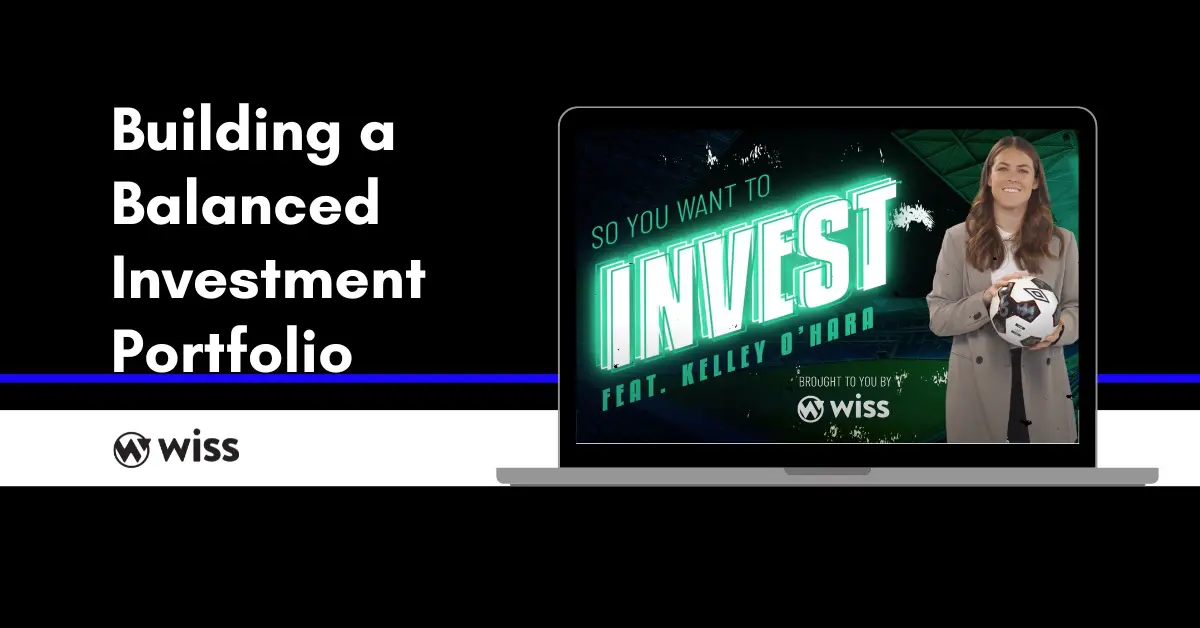Soccer star Kelley O’Hara joined Wiss to discuss strategies for building a balanced investment portfolio. O’Hara, a two-time World Cup winner and Olympic gold medalist with the U.S. Women’s National Team, shared her perspective on smart investing by comparing it to constructing a winning sports roster.
Diversifying your investment portfolio across different asset classes is comparable to ensuring a soccer team has players in various positions to succeed. In this article, we’ll use O’Hara’s balanced portfolio framework to walk through the critical steps for allocating your investments wisely.
Allocating Across Major Asset Classes
The foundation of a balanced portfolio is spreading your investment dollars across the major asset classes like stocks, bonds, real estate, and cash equivalents. Each asset class has different risk and return profiles, so the right mix depends on factors like risk tolerance and investment timeline.
As a general guideline, younger investors with longer time horizons can afford to take more risk and tilt their portfolios heavily toward stocks, usually around 70-80%. As you get closer to retirement, dial back the stock allocation and increase holdings in more stable assets like bonds and cash. Here are some recommendations for percentage allocations across asset classes:
– Stocks: 60-80%
– Bonds: 10-30%
– Real Estate: 5-10%
– Cash: 5-10%
Revisit your target asset allocation at least once a year and rebalance it to return your portfolio to the desired percentages.
Choosing Your Stocks
You generally want to favor stock mutual funds or ETFs over individual company stocks for stock exposure. Funds provide instant diversification and professional management, while individual stocks carry higher risk.
Start your stock portfolio with one or two broad stock index funds that track major market segments like the S&P 500 or the total stock market. Add funds focused on styles (growth vs. value), market caps (large vs. small), sectors (tech, healthcare, etc.), and geographies (U.S. vs. international) to refine your strategy.
Selecting Your Bonds
Bonds play a supporting “defender” role in your portfolio. Shorter-term bonds or bond funds can provide stability and income, while longer-term bonds offer higher returns potential.
For the safest bonds, look to U.S. Treasury bonds backed by the government. Other options are corporate and municipal bonds from companies or local governments. Bond funds let you own bundles of bonds for instant diversification.
Adding Real Estate
Real estate investment trusts (REITs) offer an easy way to gain exposure to real estate without directly owning property. REITs invest in various real estate assets and trade on major stock exchanges.
If you want to invest in real estate directly, options include rental properties, house flipping, crowdfunding platforms, and more. These come with more hands-on work as a landlord or real estate manager.
Final Tips for Rebalancing and Reviewing Your Portfolio
Rebalance your portfolio annually to get allocations back to your target percentages. If an asset class has outperformed, trim it by selling holdings and directing the proceeds into underperforming assets.
Review your overall asset allocation whenever your time horizon or risk tolerance changes. For example, as you near retirement, gradually reduce stock holdings in favor of more bonds and cash to preserve capital.
Building a balanced, diversified portfolio aligned with your financial goals takes research and discipline. But with the proper asset allocation and periodic rebalancing, you can grow your wealth while managing risk.
Want to learn more straight from Kelley O’Hara? Be sure to check out the “So You Want to Invest?” video series on the Wiss YouTube channel, where O’Hara and financial experts provide beginner-friendly tips on investing.
By starting with the basics and constructing a balanced portfolio, you can begin your journey towards financial freedom. With the right game plan, your money can start working for you.

 Previous
Previous






